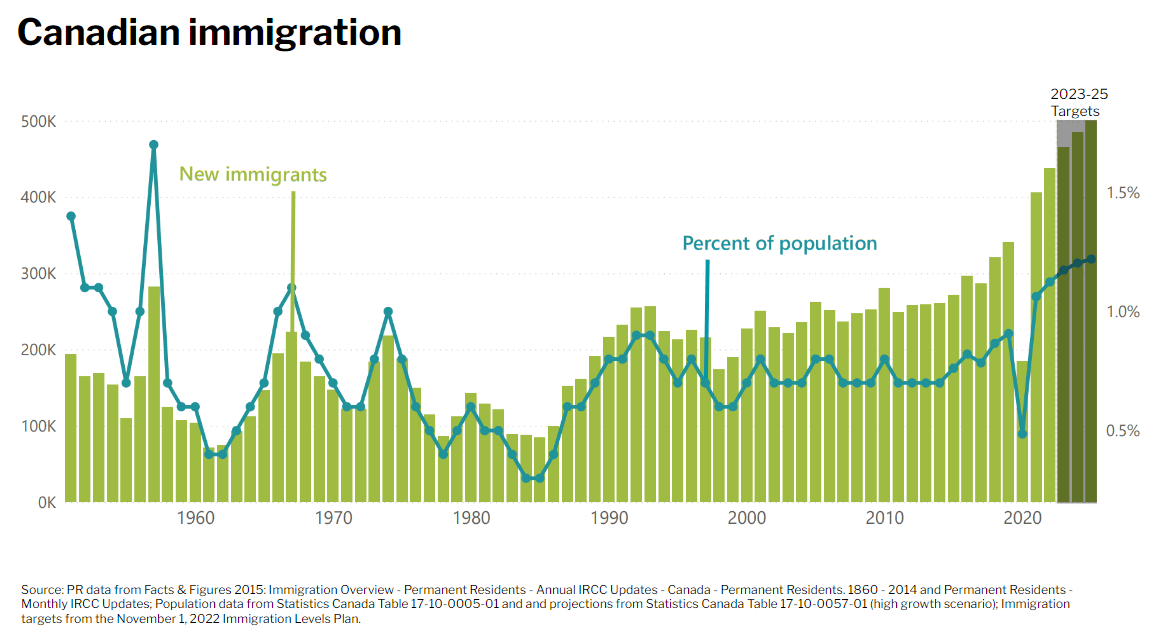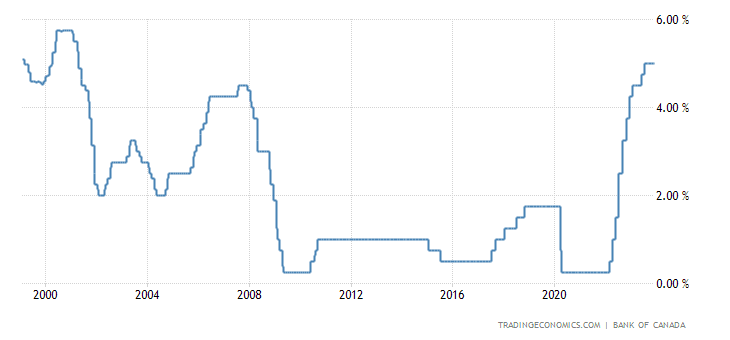Edmonton Real Estate Market Outlook 2024
Several dominating themes emerged in 2023 that had a significant impact on the Canadian housing market. We will dive into these core themes - detail how they impacted Alberta and Edmonton specifically in 2023 and suggest how their trajectories will steer us in 2024. For initial context and perspective, the Edmonton Real Estate Board predicted a roughly 1% increase in prices across all product types in 2024.
MIGRATION
In 2023, Alberta experienced some of the highest migration levels on record. This consisted of both international immigration and interprovincial migration. In total, Alberta’s population grew by 4.3% in the 12 months preceding October 1st (which is the latest statistical data that is available from the province). In the third quarter alone, Alberta’s population increased by 1.3% adding 56,306 (36,212 From international immigration and 17,094fro interprovincial migration). The interprovincial migration doesn’t tell the full story as the actual figure of people that moved to Alberta in Q3 was 29,129; however, the way migration is calculated is amount of people that moved to Alberta – minus the people that left the province. The total moving in to the province was 6.9% lower than the third quarter of the previous year but the number of people leaving the province also dropped by a larger number (11%) meaning less people are leaving the province.
CHART | CANADIAN IMMIGRATION HISTORY

There are rumors that Q4 numbers will be equally strong with international and net inter-provincial migration. The federal government has brought in regulations aimed at alleviating housing availability, but these will have little impact in the near term as they don’t anticipate decreasing overall immigration targets much below what we have seen in the past few years beyond 2026. Current immigration levels have nearly doubled over the last 8 years putting a major strain on housing costs across Canada. Edmonton has been largely immune to these increases and prices have remained relatively flat. This trend may start to change as overall affordability in the region is strong compared to other major markets. Edmonton also does a better job at retaining newcomers than its counterpart, Calgary, to the south. Immigration and Edmonton’s large stock of comparably affordable real estate are attractive for outlooks in 2024. Western Investor and other notable investment publications have aptly named Edmonton as the number one place to invest in 2024. As Calgary increases in price at a greater differential to Edmonton there may be some intercity migration that could contribute to an overall increase in Edmonton greater than anticipated.
INTEREST RATES
Q3 2023 saw the first pauses to increasing mortgage rates since early 2022. 10 consecutive rate hikes brought rates to heights not seen for 25 years, taking rates from 0.25% in February of 2022 to 5% which they have held since July of 2023 in one of the fastest rate hike cycles in history. This large increase in rates has put a strain on households, especially those who are renewing or have been riding the increase with a variable rate mortgage. Mortgage costs have increased or are anticipated to increase as much as 40% for those who purchased or renewed at the bottom in 2020. This disparity between rates is keeping many people on the sidelines, both sellers - because it is hard to move up and qualify for a more expensive home with the increase in rates - and buyers, who are waiting for their purchasing power to increase and their monthly payments to fall. This has certainly wreaked havoc on supply and demand dynamics and 2024 should see some recalibration.
CHART | CANADIAN INTEREST RATE HISTORY

Initially interest rates were anticipated to fall by April 2024 but the chances of this are decreasing due to sticky inflation figures just released showing inflation at 3.4% - a slight increase from the previous month and bucking the trend that the Bank of Canada would like to see before they decrease. Alas, we are likely looking to the end of Q2 for any change in rates in the June 5th announcement. The spring market will factor in the anticipated decrease with purchasers potentially opting for a longer possession so they can capitalize on rate reductions in June. Although we anticipate a strong spring market this could potentially delay the flurry of activity and extend into the summer months.
INVENTORY
Inventory in Edmonton has been declining over the past four quarters and finished the year on average with a 25% decline – moving the metric closer to a balanced market and in the case of townhomes to sellers' market territory. Both detached and apartments showed a decrease in inventory of 20% while townhome inventory decreased by over 36%. If this trend continues, with fewer homes hitting the market coupled with an increase in sales, we could see a stronger increase in prices especially within the more affordable attached and detached markets.
OTHER MARKET OBSERVATIONS
Other micro trends that could impact pricing but more likely to impact purchaser intent, are zoning relaxations, short-term rental regulations and pricing in other markets.
The City of Edmonton has this past year approved a new land-use bylaw (Now in effect) that substantially increases the density that can be built on most residential lots in the city. They are progressive in this regard and are hoping to garner attention from the federal government and the Housing Accelerator Fund for cash to support increased housing development. We believe that long-term these zoning changes will increase demand for primarily single family detached dwelling neighbourhoods. Developers will also be looking for nice corner lots in established single family communities where they can most easily build higher density developments. Stay tuned for higher density 4-plex and 8-plex inventory in your neighbourhood.
Short-term rental restrictions have the ability to steer buyer demand and investors away from the condo markets. This is intended to increase the stock of longer-term housing options and decrease the appetite for investors to purchase homes that were once attractive only from a short-term investment perspective. The regulations that have already been enacted in many other markets restrict homeowners from renting short-term units that are not their primary residence. Regulators also hope that these investors, once no longer able to make the same return and not looking to rent long-term will bring this inventory back to the resale market and thus increase inventory. If this trend continues which is expected, it could shift buyer intent. Be wary of air-bnb properties as an investment and have a back-up plan.
Pricing trends in other markets across Canada and maybe more locally (Calgary), could begin/continue to rise with the anticipation of decreased interest rates. Calgary’s outlook for 2024 if an average increase of 6.5% and 9.5% for condos. This could drive more people to the Edmonton area looking for an affordability advantage as prices are anticipated to remain relatively stable in comparison.
2024 EDMONTON REAL ESTATE MARKET OUTLOOK
Immigration, interest rates and Inventory are the three biggest stories to watch and those that have the largest bearing on the direction of the real estate market in Edmonton in 2024. We anticipate slow growth for the multi-family market in Edmonton and agree with modest increases in the segment in the range of 1%. More affordable attached and detached markets could be served well by the aforementioned indicators. If immigration remains strong and inventory levels decrease along with interest rates late Q2 we could see a larger increase in the range of 2-4%. The luxury market will still lag with increased inventory levels and soft demand compared to its more affordable counterparts.
In short, we anticipate the market to remain balanced, with nominal price gains, but the potential of larger increases and a pivot to a sellers market as we monitor immigration and interprovincial migration reflected predominately in more affordable detached pockets.